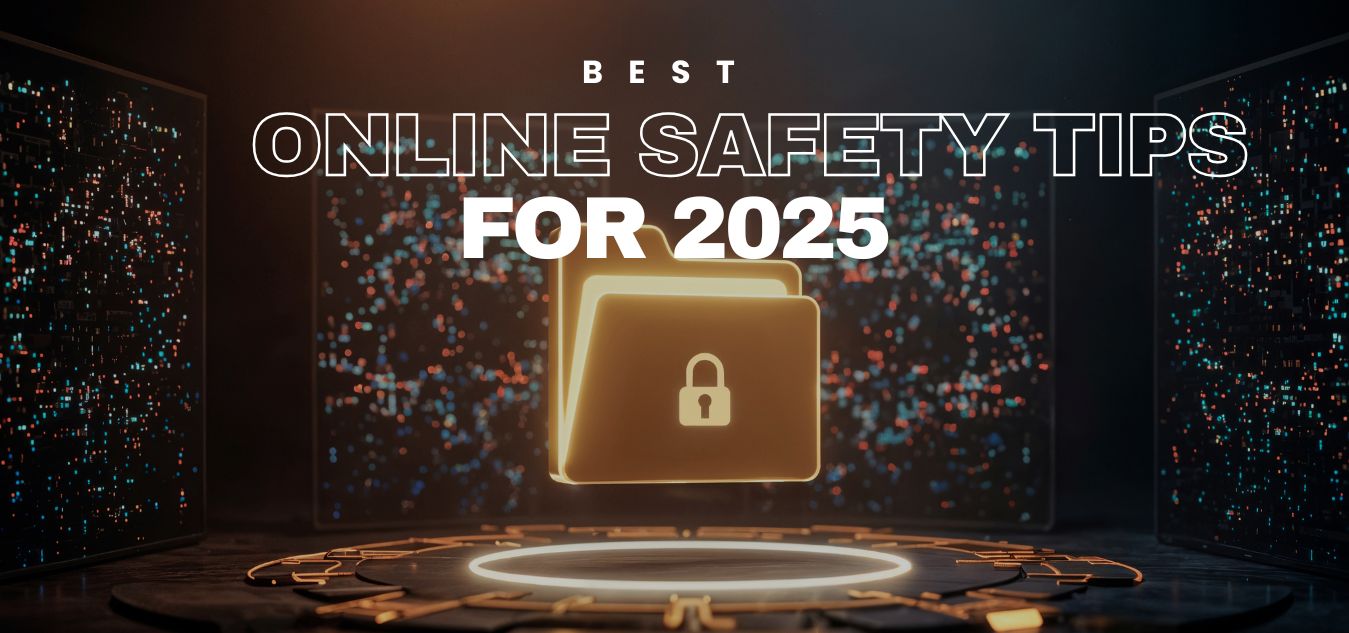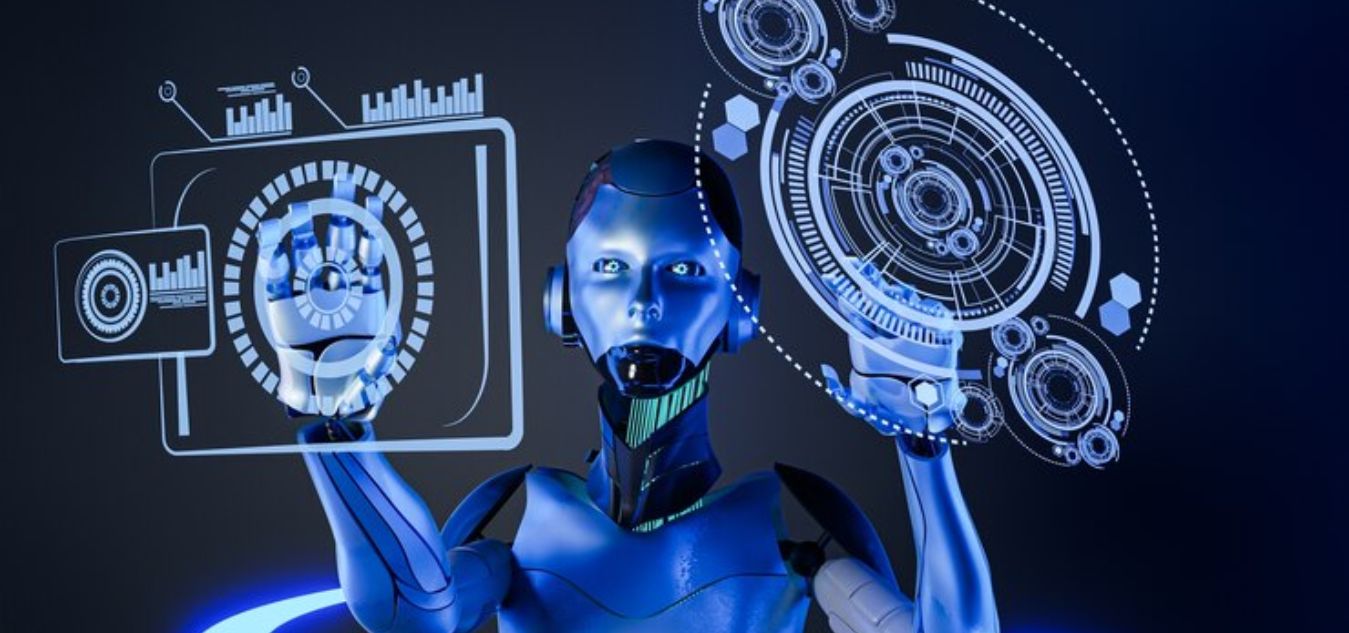
Top 9+ Best Artificial Intelligence Tickets for Designers
Why Invest in Artificial Intelligence Tickets for Designers?
Before we reveal the top tools, let’s explore why embracing AI-powered solutions is essential for modern design professionals:
- Save Time Effortlessly
AI handles tedious, repetitive tasks, freeing you to focus on creating stunning designs. - Boost Creativity
Experiment with innovative styles and techniques faster, unlocking your full creative potential. - Scale Seamlessly
Manage multiple projects efficiently without compromising on quality—perfect for freelancers and agencies alike. - Ensure Precision and Consistency
Achieve flawless design harmony and consistent branding with every project. - Stay Ahead in the Market
Harnessing AI technology positions you as a forward-thinking designer ready for any challenge.
Integrate these tools into your workflow to save time, enhance creativity, and stand out in the competitive design landscape. Stay tuned for the ultimate tools to transform your process!
The Selection Criteria for Artificial Intelligence Tickets
When selecting AI tools for designers, focus on these essentials:
- Functionality: Supports diverse design needs like UI/UX, graphic design, and video editing.
- Ease of Use: Intuitive with seamless workflow integration.
- Value: Offers robust features at a fair price with trials or flexible plans.
- Compatibility: Works well with tools like Adobe Creative Cloud, Figma, or Sketch.
- Support: Reliable customer service and a thriving user community.
Top 13 Best Artificial Intelligence Tickets for Designers
AI Tickets are revolutionizing design by automating tasks and boosting creativity, empowering designers to create high-quality work faster. Discover the top 13 Artificial Intelligence Tickets for designers!
1. Adobe Sensei
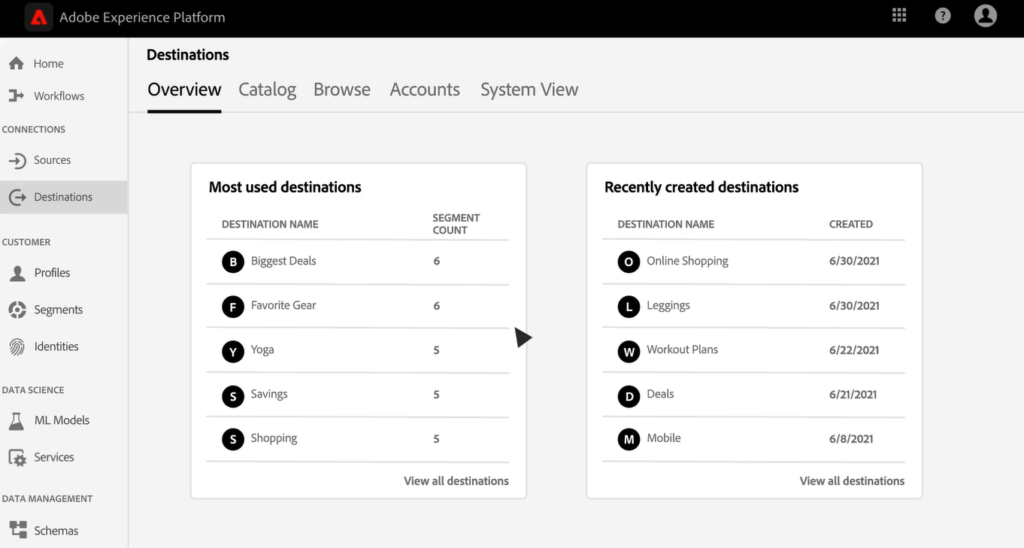
Adobe Sensei is Adobe’s AI and machine learning framework, seamlessly integrated into Adobe Creative Cloud and Adobe Experience Cloud. It offers a range of AI-powered tools and features that automate mundane tasks, provide intelligent insights, and enhance creative possibilities for designers.
Key Features:
- AI-Powered Tools: Adobe Sensei automates tasks in Photoshop, Illustrator, and Premiere Pro, including photo editing, content-aware fill, and video enhancements.
- Design Automation: Quickly generate design variations and layouts, ensuring consistency and saving time.
- Predictive Analytics: Gain actionable insights from design trends and user behavior to inform smarter creative decisions.
Benefits:
- Enhanced Productivity: By automating repetitive tasks, Adobe Sensei allows designers to focus on more creative aspects of their work, leading to increased productivity.
- Seamless Integration: As part of Adobe Creative Cloud, Adobe Sensei integrates seamlessly with the tools designers are already familiar with, making it easy to incorporate AI into existing workflows.
- Rich Feature Set: Adobe Sensei offers a comprehensive suite of tools that cater to a wide range of design needs, from photo editing to video production.
Pricing:
- Subscription Cost: Adobe’s pricing can be high, with Creative Cloud subscriptions starting at $52.99 per month. This subscription includes access to all Adobe Creative Cloud apps, making it a comprehensive but expensive option for designers.
Drawbacks:
- High Cost: Adobe Sensei is part of the Adobe Creative Cloud, which can be expensive, especially for freelancers or small design studios with limited budgets.
- Learning Curve: While Adobe Sensei is powerful, it can have a steep learning curve, particularly for those new to Adobe’s ecosystem or unfamiliar with AI-driven tools.
- Resource-Intensive: Adobe Sensei requires a robust system to run efficiently, which might not be ideal for designers working on older or less powerful hardware.
Use Cases:
- Creative Campaigns: Use Adobe Sensei to automate and optimize various aspects of creative campaigns, from initial design concepts to final production.
- Photo and Video Editing: Enhance photo and video editing processes with AI-powered tools that automate tasks like color correction, object removal, and content-aware fill.
Integration Tips:
- Leverage Cloud Libraries: Use Adobe Creative Cloud Libraries to store and manage assets across different projects, ensuring consistency and easy access.
- Utilize Tutorials and Community Support: Take advantage of the extensive resources, tutorials, and community forums available to Adobe users to get the most out of Adobe Sensei.
2. Figma with AI Plugins

Figma is a web-based design tool well-known for its collaborative features, making it a favorite among UI/UX designers. What makes Figma even more powerful is its suite of AI plugins that automate design tasks, provide AI-generated content, and enhance design accuracy.
Key Features:
- AI-Powered Plugins: Figma offers a wide range of plugins that leverage AI to automate design tasks such as color palette generation, layout suggestions, and content generation.
- Real-Time Collaboration: Figma allows multiple users to work on the same design file simultaneously, making it ideal for team projects and client collaboration.
- Prototyping and Design Systems: Figma’s prototyping features, combined with AI plugins, allow for rapid creation of interactive prototypes, streamlining the design process.
Benefits:
- Efficiency and Speed: Figma’s AI-powered plugins can significantly speed up the design process by automating tasks that would otherwise be time-consuming, such as generating color schemes or creating layout suggestions.
- Customizability: With a wide range of plugins available, designers can customize Figma to fit their specific workflow needs, making it a versatile tool for various design projects.
- Cross-Platform Compatibility: As a web-based tool, Figma is accessible from any device with an internet connection, allowing for seamless collaboration across teams.
Pricing:
- Affordable Pricing: Figma offers a free version for individuals, with professional plans starting at $12 per editor per month. This makes it accessible for both freelancers and design teams.
Drawbacks:
- Limited Offline Access: Since Figma is a web-based tool, its functionality is limited when working offline, which could be a drawback for designers who need to work without an internet connection.
- Plugin Dependency: While the AI-powered plugins are powerful, relying too heavily on them might limit a designer’s creativity or lead to over-standardization in designs.
- Learning Curve: Figma has a range of features and plugins that may require time to learn and master, particularly for those new to the platform.
Use Cases:
- Rapid Prototyping: Use Figma’s AI-powered plugins to quickly create interactive prototypes, streamlining the design and feedback process.
- Consistency in Design: Leverage Figma’s design systems and AI tools to maintain consistency across different projects and platforms.
Integration Tips:
- Use Community Resources: Explore the Figma Community for plugins, templates, and design systems that can enhance your workflow.
- Combine Plugins for Maximum Efficiency: Experiment with different combinations of AI-powered plugins to optimize your design process and achieve the best results.
3. DALL-E by OpenAI
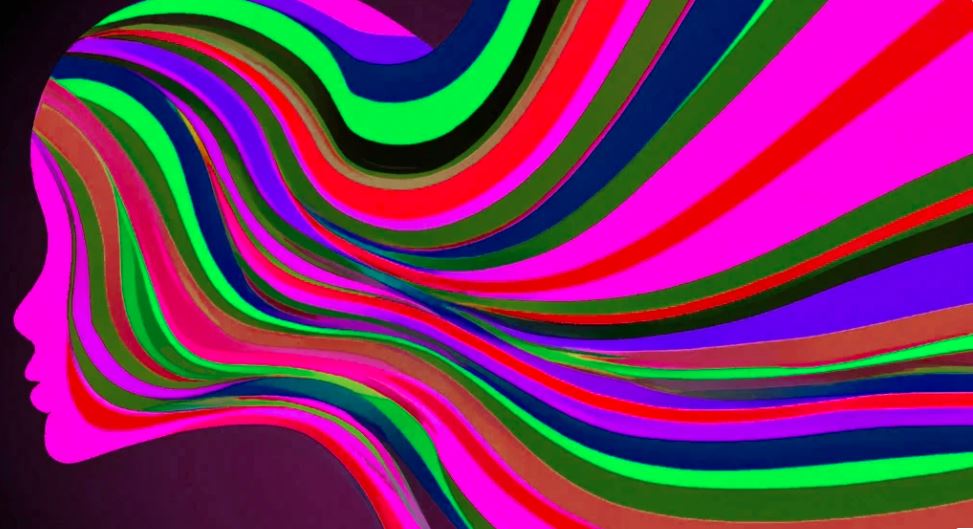
DALL-E by OpenAI is a revolutionary AI model that generates images from textual descriptions, offering designers a unique tool for concept visualization and creative exploration.
Key Features:
- Text-to-Image Generation: DALL-E allows designers to generate images based on detailed textual descriptions, enabling the creation of unique and original visuals.
- Iterative Refinement: Designers can refine the generated images by providing additional text prompts, allowing for a more customized output.
- High-Resolution Outputs: DALL-E can generate high-resolution images, making it suitable for both digital and print applications.
Benefits:
- Creative Freedom: DALL-E opens up new avenues for creative exploration, allowing designers to generate visuals that might be difficult or time-consuming to create manually.
- Rapid Concept Visualization: Designers can quickly visualize concepts and ideas, making DALL-E a valuable tool for brainstorming and ideation phases.
- Versatile Applications: The generated images can be used across various design projects, including branding, advertising, and editorial design.
Pricing:
- Token-Based Pricing: DALL-E operates on a token-based system, where users purchase tokens to generate images. Pricing varies based on usage, making it flexible for different needs.
Drawbacks:
- Content Limitations: While DALL-E is powerful, it has limitations in generating certain types of content, particularly complex scenes or highly detailed images.
- Ethical Considerations: The use of AI-generated images raises ethical questions about originality, copyright, and the potential impact on traditional design jobs.
- Variable Quality: The quality of the generated images can vary, requiring designers to experiment with different prompts to achieve the desired results.
Use Cases:
- Concept Art and Mood Boards: Use DALL-E to generate concept art and visuals for mood boards, helping to set the tone and direction of a design project.
- Marketing and Advertising: Leverage DALL-E’s unique image generation capabilities to create eye-catching visuals for marketing campaigns and social media.
Integration Tips:
- Combine with Traditional Design Tools: Use DALL-E-generated images as a starting point, then refine and enhance them using traditional design tools like Photoshop or Illustrator.
- Experiment with Text Prompts: Experiment with different text prompts to explore the full creative potential of DALL-E and generate unique visuals.
4. Uizard
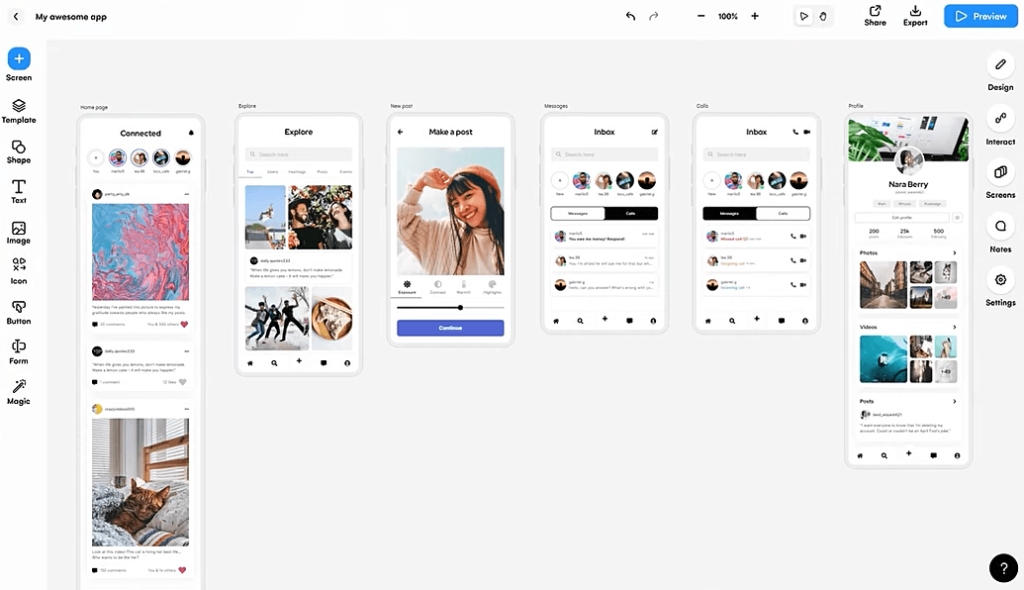
Uizard is an AI-powered design tool that turns sketches into digital designs, enabling designers to quickly prototype and iterate on their ideas.
Key Features:
- Sketch-to-Design Conversion: Uizard allows designers to upload hand-drawn sketches, which it then converts into digital wireframes and mockups.
- UI Component Library: Uizard offers a library of pre-built UI components that can be customized and integrated into designs.
- Collaboration Tools: Uizard supports real-time collaboration, making it easy for teams to work together on design projects.
Benefits:
- Speed and Efficiency: Uizard significantly reduces the time it takes to go from concept to prototype, allowing designers to iterate quickly and efficiently.
- User-Friendly Interface: Uizard’s intuitive interface makes it accessible to both designers and non-designers, facilitating collaboration across different teams.
- Cost-Effective Prototyping: Uizard’s sketch-to-design capabilities make it a cost-effective tool for early-stage prototyping, particularly for startups and small businesses.
Pricing:
- Free Plan Available: Uizard offers a free plan with limited features, while premium plans start at $12 per user per month, making it affordable for individual designers and small teams.
Drawbacks:
- Limited Customization: While Uizard is powerful for prototyping, its design capabilities are somewhat limited, making it less suitable for final production designs.
- Learning Curve for Non-Designers: While Uizard is user-friendly, non-designers may still face a learning curve when using the tool, particularly when customizing UI components.
- Dependency on Sketches: The quality of the final design depends heavily on the initial sketch, which might limit the tool’s effectiveness for designers who prefer to work digitally from the start.
Use Cases:
- Rapid Prototyping: Use Uizard to quickly turn hand-drawn sketches into digital prototypes, allowing for rapid iteration and testing.
- Collaborative Design: Leverage Uizard’s real-time collaboration features to involve stakeholders and team members in the design process.
Integration Tips:
- Pair with UX Tools: Combine Uizard with UX tools like Figma or Sketch for more detailed design work and user testing.
- Use as a Starting Point: Use Uizard to create initial prototypes, then refine and finalize the designs using more advanced design software.
5. Runway ML

Runway ML is a creative toolkit that brings the power of AI to the fingertips of designers, offering a wide range of tools for creating AI-generated art, video, and interactive experiences.
Key Features:
- AI Models for Creative Projects: Runway ML offers a variety of pre-trained AI models that can be used for tasks such as image generation, video editing, and 3D modeling.
- Real-Time Collaboration: Designers can collaborate in real-time on creative projects, making Runway ML a powerful tool for team-based workflows.
- Custom Model Training: For more advanced users, Runway ML allows for the training of custom AI models tailored to specific creative needs.
Benefits:
- Creative Flexibility: Runway ML provides designers with a wide range of tools and models, enabling them to experiment with different creative approaches and techniques.
- Ease of Use: Despite its powerful capabilities, Runway ML is designed to be user-friendly, making it accessible to designers with varying levels of technical expertise.
- Cross-Disciplinary Collaboration: Runway ML’s real-time collaboration features make it ideal for projects that require input from different creative disciplines, such as graphic design, video production, and interactive media.
Pricing:
- Flexible Pricing: Runway ML offers a free plan with access to basic tools, while premium plans with advanced features start at $15 per user per month.
Drawbacks:
- Performance Limitations: The performance of AI models in Runway ML can vary depending on the complexity of the task, which might limit its effectiveness for certain projects.
- Steep Learning Curve for Advanced Features: While Runway ML is user-friendly, its more advanced features, such as custom model training, require a deeper understanding of AI and machine learning concepts.
- Limited Offline Access: Runway ML is primarily a cloud-based tool, meaning its functionality is limited when working offline.
Use Cases:
- AI-Generated Art: Use Runway ML’s AI models to create unique, AI-generated art pieces that can be used in various design projects, from branding to advertising.
- Interactive Experiences: Leverage Runway ML’s tools to create interactive experiences, such as AI-driven installations or interactive video content.
Integration Tips:
- Combine with Traditional Tools: Use Runway ML in conjunction with traditional design tools like Adobe Creative Cloud to enhance and refine AI-generated content.
- Explore Pre-Trained Models: Experiment with the wide range of pre-trained models available in Runway ML to discover new creative possibilities and techniques.
6. Khroma
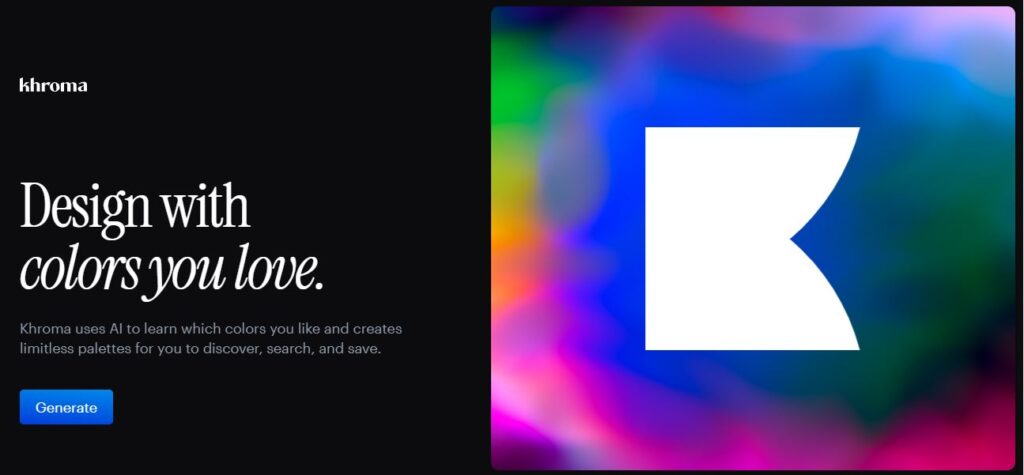
Khroma is an AI-powered color tool that helps designers discover, save, and work with color palettes tailored to their personal style and project needs.
Key Features:
- AI-Generated Color Palettes: Khroma uses AI to generate color palettes based on a designer’s preferences, allowing for personalized color suggestions.
- Color Combinations: Khroma suggests complementary color combinations, making it easier for designers to create visually appealing designs.
- Palette Exploration: Designers can explore a wide range of palettes, from monochromatic to triadic, ensuring they find the perfect color scheme for their project.
Benefits:
- Personalized Color Choices: Khroma’s AI-driven approach ensures that the color palettes generated are tailored to a designer’s individual style and preferences.
- Time-Saving: Khroma eliminates the guesswork in color selection, allowing designers to quickly find the right colors for their projects.
- Inspiration and Creativity: Khroma’s extensive palette options can inspire designers to experiment with new color combinations and styles.
Pricing:
- Free to Use: Khroma is free to use, making it accessible to designers of all levels.
Drawbacks:
- Limited Customization: While Khroma offers personalized palettes, the level of customization is somewhat limited compared to more advanced color tools.
- Dependency on Initial Preferences: The accuracy of Khroma’s color suggestions depends on the initial preferences set by the designer, which may limit its effectiveness if those preferences change over time.
- No Integration with Design Software: Khroma does not integrate directly with popular design software, requiring designers to manually input color values into their projects.
Use Cases:
- Branding and Identity: Use Khroma to discover and experiment with color palettes that align with a brand’s identity and message.
- Web and App Design: Leverage Khroma’s color combinations to create visually appealing and cohesive web and app designs.
Integration Tips:
- Use with Design Systems: Incorporate Khroma’s color palettes into design systems and style guides to ensure consistency across different projects.
- Pair with Traditional Color Tools: Use Khroma in conjunction with traditional color tools like Adobe Color to refine and enhance the color palettes generated.
7. Deep Dream Generator

Deep Dream Generator is an AI-powered tool that uses neural networks to create unique, dream-like images by enhancing and transforming existing visuals.
Key Features:
- Neural Network-Based Image Transformation: Deep Dream Generator applies a deep learning algorithm to existing images, creating surreal, dream-like visuals.
- Customizable Filters: Designers can adjust the intensity and style of the transformations, allowing for a high level of customization.
- Creative Exploration: Deep Dream Generator encourages creative exploration by offering a unique approach to image editing and enhancement.
Benefits:
- Unique Artistic Effects: Deep Dream Generator offers a distinct, artistic style that can be used to create one-of-a-kind visuals for various design projects.
- Inspiration and Creativity: The tool’s unique effects can inspire new ideas and creative approaches, pushing the boundaries of traditional design.
- Easy to Use: Despite its complex underlying technology, Deep Dream Generator is user-friendly and accessible to designers of all skill levels.
Pricing:
- Free Plan Available: Deep Dream Generator offers a free plan with limited features, while premium plans with additional customization options start at $9 per month.
Drawbacks:
- Limited Control: While Deep Dream Generator offers customization options, the level of control over the final output is somewhat limited, making it less suitable for precise design work.
- Niche Application: The tool’s unique style may not be suitable for all design projects, particularly those that require a more traditional or polished look.
- Performance Variability: The quality of the generated images can vary depending on the complexity of the input image and the chosen settings.
Use Cases:
- Artistic Projects: Use Deep Dream Generator to create unique, AI-enhanced art pieces that stand out in portfolios, galleries, or marketing materials.
- Creative Experimentation: Leverage the tool’s unique effects to experiment with new styles and techniques, pushing the boundaries of traditional design.
Integration Tips:
- Pair with Image Editing Software: Use Deep Dream Generator as a starting point, then refine and enhance the images using traditional image editing software like Photoshop or GIMP.
- Experiment with Different Inputs: Try using a variety of input images to explore the full creative potential of Deep Dream Generator and discover new artistic styles.
8. Lumen5

Lumen5 is an AI-powered video creation tool that allows designers to turn written content into engaging video presentations, making it a valuable asset for content marketing and social media campaigns.
Key Features:
- Text-to-Video Conversion: Lumen5 converts blog posts, articles, and other written content into videos, using AI to match visuals with the text.
- Customizable Templates: Designers can choose from a variety of templates and customize them to fit their brand’s style and message.
- Automated Video Creation: Lumen5 automates the video creation process, allowing designers to produce high-quality videos quickly and efficiently.
Benefits:
- Time-Saving: Lumen5’s AI-driven approach significantly reduces the time required to create videos, making it ideal for content marketers and social media managers.
- Cost-Effective Video Production: Lumen5 offers an affordable alternative to traditional video production, allowing designers to create professional videos without the need for expensive equipment or software.
- Engaging Content: Videos created with Lumen5 are visually engaging and can help increase audience engagement on social media and other platforms.
Pricing:
- Free Plan Available: Lumen5 offers a free plan with basic features, while premium plans with advanced options start at $29 per month.
Drawbacks:
- Limited Customization: While Lumen5 offers customization options, the level of control over the final video is somewhat limited, making it less suitable for complex or highly detailed video projects.
- Template Dependency: Lumen5 relies heavily on templates, which may result in videos that feel formulaic or lacking in originality.
- Variable Output Quality: The quality of the final video can vary depending on the complexity of the input content and the chosen template.
Use Cases:
- Content Marketing: Use Lumen5 to quickly turn blog posts and articles into engaging video content that can be shared on social media and other platforms.
- Social Media Campaigns: Leverage Lumen5’s AI-driven video creation capabilities to produce eye-catching videos for social media campaigns, helping to boost audience engagement.
Integration Tips:
- Combine with Graphic Design Tools: Use Lumen5 in conjunction with graphic design tools like Canva or Adobe Spark to create cohesive and visually appealing video content.
- Experiment with Different Templates: Try using a variety of templates and customization options to create unique and engaging videos that stand out from the competition.
9. Artisto
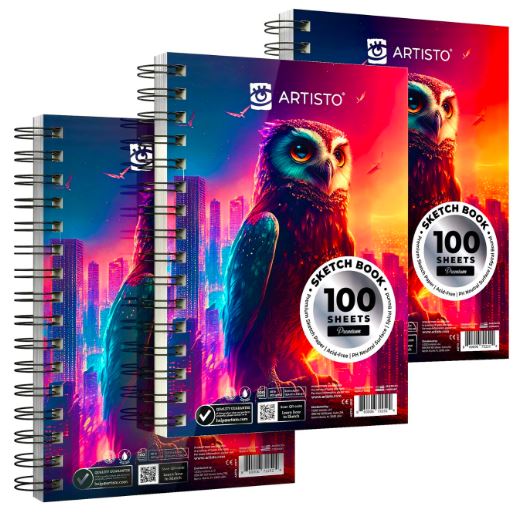
Artisto is an AI-powered video editing app that applies artistic filters to videos, transforming them into works of art with just a few taps.
Key Features:
- Artistic Filters: Artisto offers a range of artistic filters inspired by famous artists and art movements, allowing designers to transform their videos into unique visual experiences.
- Real-Time Editing: The app allows for real-time video editing, making it easy to see the effects of different filters and make adjustments on the fly.
- User-Friendly Interface: Artisto’s intuitive interface makes it easy for designers to apply filters and edit videos, even without prior video editing experience.
Benefits:
- Creative Freedom: Artisto’s wide range of artistic filters allows designers to experiment with different styles and create unique video content.
- Quick and Easy Editing: The app’s user-friendly interface and real-time editing capabilities make it easy to produce high-quality videos quickly.
- Affordable Option: Artisto offers an affordable alternative to more complex video editing software, making it accessible to designers on a budget.
Pricing:
- Free with In-App Purchases: Artisto is free to download and use, with additional filters and features available through in-app purchases.
Drawbacks:
- Limited Functionality: While Artisto is great for applying artistic filters, its overall video editing capabilities are limited compared to more advanced video editing software.
- Template Dependency: The app’s reliance on pre-set filters and templates may limit creativity and result in videos that feel formulaic.
- Variable Output Quality: The quality of the final video can vary depending on the chosen filter and the resolution of the original video.
Use Cases:
- Artistic Video Projects: Use Artisto to create unique, artistically enhanced videos for portfolios, social media, or marketing campaigns.
- Quick Edits on the Go: Leverage Artisto’s mobile capabilities to make quick edits and apply artistic filters to videos while on the go.
Integration Tips:
- Pair with Traditional Video Editing Software: Use Artisto to apply artistic filters, then refine and enhance the video using more advanced editing software like Adobe Premiere Pro or Final Cut Pro.
- Experiment with Different Filters: Try using a variety of filters to discover new styles and techniques, pushing the boundaries of traditional video editing.
10. Designify

Designify is an AI-powered design tool that simplifies the process of creating professional-quality images by automating tasks such as background removal, color correction, and image enhancement.
Key Features:
- Background Removal: Designify uses AI to automatically remove backgrounds from images, making it easy to create clean, professional visuals.
- Image Enhancement: The tool offers automated image enhancement features, such as color correction and sharpening, to improve the quality of images.
- Template-Based Design: Designify offers a range of templates that can be customized to create visually appealing designs quickly and easily.
Benefits:
- Time-Saving: Designify’s AI-driven approach automates time-consuming tasks, such as background removal and image enhancement, allowing designers to focus on more creative aspects of their work.
- User-Friendly Interface: The tool’s intuitive interface makes it easy for designers of all skill levels to create professional-quality images quickly and efficiently.
- Cost-Effective Solution: Designify offers an affordable alternative to more complex design software, making it accessible to freelancers and small design studios.
Pricing:
- Free Plan Available: Designify offers a free plan with basic features, while premium plans with additional customization options start at $9 per month.
Drawbacks:
- Limited Customization: While Designify offers customization options, the level of control over the final design is somewhat limited, making it less suitable for complex or highly detailed projects.
- Template Dependency: The tool relies heavily on templates, which may result in designs that feel formulaic or lacking in originality.
- Variable Output Quality: The quality of the final design can vary depending on the complexity of the input image and the chosen template.
Use Cases:
- E-Commerce and Product Photography: Use Designify to quickly remove backgrounds and enhance product images for use in e-commerce listings, catalogs, or marketing materials.
- Social Media Content Creation: Leverage Designify’s templates and image enhancement features to create visually appealing content for social media platforms.
Integration Tips:
- Combine with Traditional Design Tools: Use Designify in conjunction with traditional design tools like Photoshop or Illustrator to refine and enhance the images created.
- Experiment with Different Templates: Try using a variety of templates and customization options to create unique and engaging designs that stand out from the competition.
11. Remove.bg
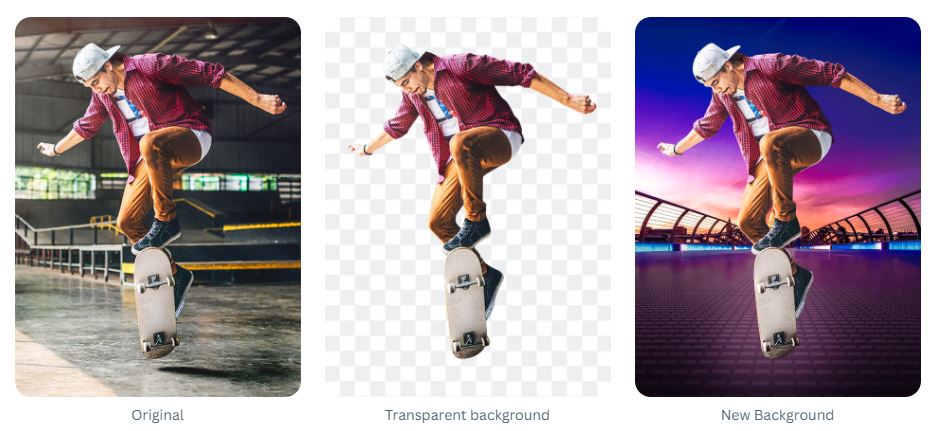
Remove.bg is an AI-powered tool specifically designed to remove backgrounds from images with a single click, making it a valuable resource for designers who need to create clean, professional visuals quickly.
Key Features:
- Automatic Background Removal: Remove.bg uses AI to automatically detect and remove backgrounds from images, leaving only the main subject.
- High-Quality Output: The tool provides high-quality output with precise background removal, ensuring that the final image is clean and professional.
- Batch Processing: Remove.bg offers batch processing capabilities, allowing designers to remove backgrounds from multiple images at once.
Benefits:
- Time-Saving: Remove.bg’s AI-driven approach significantly reduces the time required to remove backgrounds from images, making it ideal for designers who need to process large volumes of images quickly.
- User-Friendly Interface: The tool’s intuitive interface makes it easy to use, even for designers with limited technical skills.
- Cost-Effective Solution: Remove.bg offers an affordable alternative to more complex image editing software, making it accessible to freelancers and small design studios.
Pricing:
- Free Plan Available: Remove.bg offers a free plan with basic features, while premium plans with additional customization options start at $9 per month.
Drawbacks:
- Limited Customization: While Remove.bg offers high-quality background removal, the level of control over the final output is somewhat limited, making it less suitable for complex or highly detailed projects.
- Dependency on Image Quality: The accuracy of the background removal process depends on the quality of the input image, with lower-quality images potentially resulting in less precise output.
- No Integration with Design Software: Remove.bg does not integrate directly with popular design software, requiring designers to manually input the final images into their projects.
Use Cases:
- E-Commerce and Product Photography: Use Remove.bg to quickly remove backgrounds from product images for use in e-commerce listings, catalogs, or marketing materials.
- Social Media Content Creation: Leverage Remove.bg’s background removal capabilities to create clean, professional visuals for social media platforms.
Integration Tips:
- Pair with Image Editing Software: Use Remove.bg in conjunction with traditional image editing software like Photoshop or GIMP to refine and enhance the final images.
- Experiment with Different Backgrounds: After removing the background, experiment with different backgrounds to create unique and engaging visuals for your design projects.
12. Vectornator
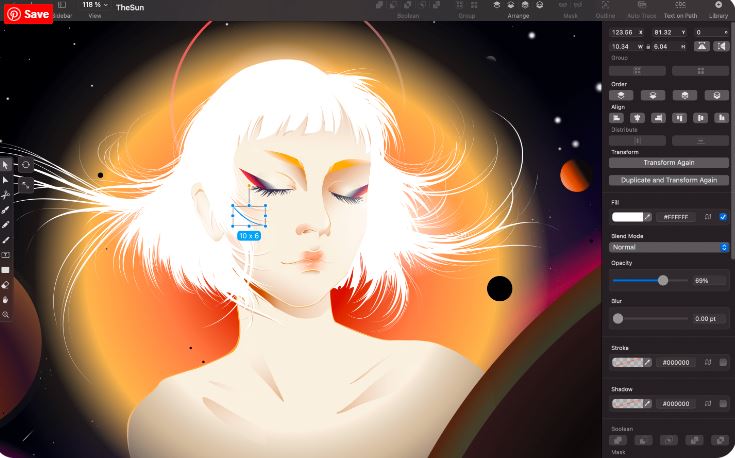
Vectornator is a powerful vector graphic design software that combines advanced vector editing tools with an intuitive user interface, making it a versatile tool for both beginners and professional designers.
Key Features:
- Advanced Vector Editing: Vectornator offers a wide range of vector editing tools, including pen tools, shape tools, and path editing options, allowing designers to create precise and scalable vector graphics.
- Illustration and Typography: The software supports advanced illustration and typography features, making it ideal for creating logos, icons, illustrations, and other vector-based designs.
- Cross-Platform Compatibility: Vectornator is available on macOS, iOS, and Windows, allowing designers to work seamlessly across different devices.
Benefits:
- High-Quality Output: Vectornator’s advanced vector editing tools ensure that the final designs are of high quality and can be scaled without loss of resolution.
- User-Friendly Interface: The software’s intuitive interface makes it accessible to both beginners and professional designers, facilitating a smooth design process.
- Free to Use: Vectornator is free to use, making it an affordable alternative to other vector graphic design software like Adobe Illustrator.
Drawbacks:
- Limited Advanced Features: While Vectornator offers a wide range of tools, it lacks some of the advanced features found in more complex vector graphic design software.
- Performance Issues on Older Devices: The software may experience performance issues on older or less powerful devices, particularly when working with large or complex files.
- Learning Curve for Beginners: While the interface is user-friendly, beginners may still face a learning curve when using the more advanced vector editing tools.
Use Cases:
- Logo and Icon Design: Use Vectornator to create precise, scalable logos and icons that can be used across different platforms and applications.
- Illustration and Typography: Leverage Vectornator’s advanced illustration and typography tools to create detailed vector illustrations and custom typography designs.
Integration Tips:
- Combine with Raster Design Tools: Use Vectornator in conjunction with raster design tools like Photoshop to create mixed-media designs that combine vector and raster elements.
- Experiment with Different Styles: Try using Vectornator’s vector editing tools to experiment with different illustration and design styles, pushing the boundaries of traditional vector graphic design.
13. Shutterstock Editor
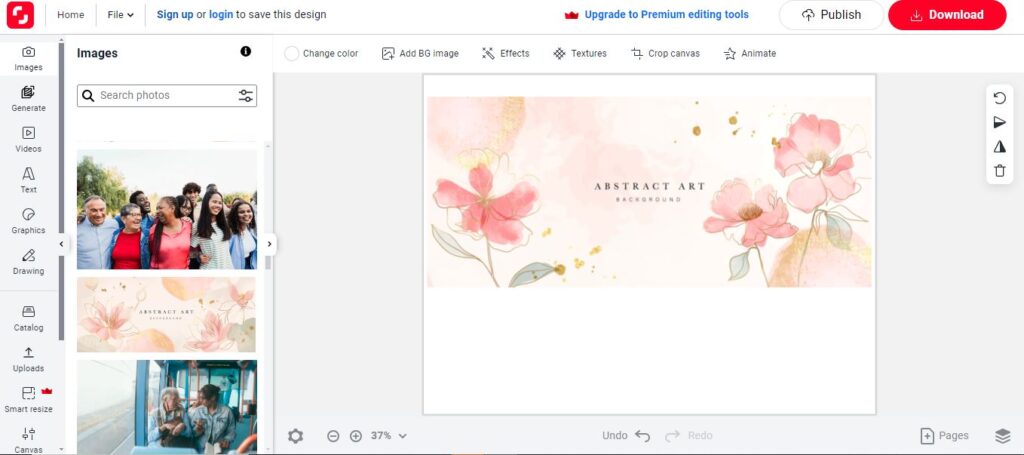
Shutterstock Editor is an online design tool that allows users to create and customize visuals using Shutterstock’s extensive library of stock images, videos, and music.
Key Features:
- Access to Shutterstock Library: Shutterstock Editor provides access to Shutterstock’s vast library of stock images, videos, and music, allowing designers to create visually appealing content quickly and easily.
- Template-Based Design: The tool offers a range of customizable templates that can be used to create social media posts, presentations, marketing materials, and more.
- Drag-and-Drop Interface: Shutterstock Editor features a drag-and-drop interface, making it easy to customize designs by adding text, images, and other elements.
Benefits:
- Time-Saving: Shutterstock Editor’s template-based design approach allows designers to create professional-quality visuals quickly and efficiently, saving time on design projects.
- Cost-Effective Solution: The tool offers an affordable alternative to more complex design software, making it accessible to freelancers, small businesses, and marketing teams.
- High-Quality Visuals: With access to Shutterstock’s extensive library, designers can create high-quality visuals that stand out and capture the attention of their audience.
Pricing:
- Free Plan Available: Shutterstock Editor offers a free plan with access to basic templates and features, while premium plans with access to the full Shutterstock library start at $29 per month.
Drawbacks:
- Limited Customization: While Shutterstock Editor offers customization options, the level of control over the final design is somewhat limited, making it less suitable for complex or highly detailed projects.
- Template Dependency: The tool relies heavily on templates, which may result in designs that feel formulaic or lacking in originality.
- Variable Output Quality: The quality of the final design can vary depending on the complexity of the input content and the chosen template.
Use Cases:
- Social Media Content Creation: Use Shutterstock Editor to quickly create visually appealing content for social media platforms, leveraging Shutterstock’s extensive library of stock images and videos.
- Marketing Materials: Leverage the tool’s template-based design approach to create high-quality marketing materials, such as flyers, brochures, and presentations.
Integration Tips:
- Combine with Traditional Design Tools: Use Shutterstock Editor in conjunction with traditional design tools like Photoshop or Illustrator to refine and enhance the images created.
- Experiment with Different Templates: Try using a variety of templates and customization options to create unique and engaging designs that stand out from the competition.
Artificial Intelligence Tickets or Tools for Designers – Detailed Comparison
| Tool | Key Features | Benefits | Pricing | Use Cases | Integration Tips |
|---|---|---|---|---|---|
| Adobe Sensei | AI-Powered Editing, Design Automation, Predictive Analytics | Enhanced Productivity, Seamless Integration | $52.99/month (Creative Cloud) | Creative Campaigns, Photo/Video Editing | Leverage Cloud Libraries, Tutorials |
| Figma with AI Plugins | AI-Powered Plugins, Real-Time Collaboration | Efficiency and Speed, Customizability | Free (individuals), $12/editor/month | Rapid Prototyping, Design Consistency | Use Community Resources, Combine Plugins |
| DALL-E by OpenAI | Text-to-Image Generation, Iterative Refinement | Breaks Creative Blocks, Rapid Prototyping | Pay-as-you-go based on image generations | Concept Art, Unique Graphic Content | Combine with Traditional Tools, Experiment |
| Uizard | AI-Powered Design Prototyping, Auto Layout Generation | Rapid Prototyping, Easy Design Transition | Free trial, paid plans start from $12/month | UI/UX Prototyping, App Design | Integrate with Design Systems, Use Templates |
| Runway ML | AI-Powered Video Editing, Machine Learning Models | Reduces Post-Production Time, Versatile | $15/month | Special Effects, Social Media Content | Use Pre-Built Models, Real-Time Collaboration |
| Khroma | Personalized Color Palettes, Various Formats | Inspires Creativity, Intuitive | Free | Branding Projects, UI/UX Design | Save Favorite Palettes, Export |
| Deep Dream Generator | Style Transfer, Multiple Modes | Unique Visual Effects, User-Friendly | $19/month (pay-per-use) | Artistic Projects, Album Covers | Combine with Photoshop, Join Community |
| Lumen5 | AI-Powered Video Creation, Automated Storyboarding | Simplifies Video Creation, Quick Turnaround | Free version, paid plans from $19/month | Social Media Videos, Marketing Content | Integrate with Social Platforms, Use Templates |
| Artisto | AI-Based Artistic Filters, Video Enhancement | Transforms Media into Art, Easy to Use | Free with In-App Purchases | Artistic Effects, Social Media Content | Combine with Editing Tools, Share Easily |
| Designify | Template Automation, AI-Based Task Automation | Increases Efficiency, Consistent Output | $10/month | Social Media, Brand Identity | Combine with Other Tools, Optimize Workflow |
| Remove.bg | Automatic Background Removal, Bulk Processing | Increases Efficiency, Versatile | $9/month or pay-per-use | E-commerce Images, Composite Creation | Use API, Combine with Editing Tools |
| Vectornator | Vector Design Tools, AI-Based Auto Trace | Precision in Vector Art, Intuitive | Free | Graphic Design, Illustration | Integrate with iCloud, Use for Prototyping |
| Shutterstock Editor | AI-Powered Image Editing, Template-Based Design | Streamlined Design Process, Versatile | Free with Shutterstock Subscription | Marketing Materials, Social Media Posts | Use with Shutterstock Assets, Customize Templates |
Conclusion
AI-powered design tools are revolutionizing the design process, offering unmatched opportunities for creativity, efficiency, and innovation. Whether you’re a seasoned pro or just starting out, these AI tools can elevate your work, pushing the boundaries of what’s possible and helping you deliver exceptional results. By integrating Artificial Intelligence Tickets into your workflow, you can unlock new potential and take your design projects to the next level.
Frequently Asked Questions (FAQs)
What are Artificial Intelligence Tickets for Designers?
Artificial Intelligence Tickets for Designers are AI-powered tools and software designed to help designers with tasks like automating repetitive work, generating creative ideas, and improving overall productivity. These tools leverage AI to assist in tasks such as image editing, color palette creation, and even generating unique artwork.
Why Should Designers Use AI Tools in Their Workflow?
Designers should use AI tools because they help automate repetitive tasks, provide new creative options, and improve the quality of work. With AI, designers can save time, increase productivity, and focus more on the creative and strategic aspects of their projects.
What Makes Deep Dream Generator a Unique Tool for Designers?
Deep Dream Generator is unique because it uses AI to create surreal and abstract visuals, which are great for artistic projects, marketing campaigns, and digital art exhibitions. It allows designers to explore new artistic styles that are hard to achieve manually.
Do AI Tools for Design Require Technical Expertise?
Most AI tools are designed to be user-friendly and accessible to designers without a technical background. While some advanced features may require a learning curve, most tools offer intuitive interfaces and tutorials to help users get started.
How Do AI Tools Improve Team Collaboration?
AI tools like Figma and Runway ML are designed with collaboration in mind, allowing teams to work together in real time on design projects. These tools enhance communication, reduce errors, and streamline the design process.
Are There Free AI Tools Available for Designers?
Yes, several AI tools like Khroma and Vectornator offer free versions or freemium models, providing essential features without a subscription fee. These free options are perfect for beginners or those on a budget.

